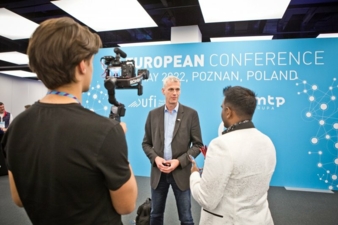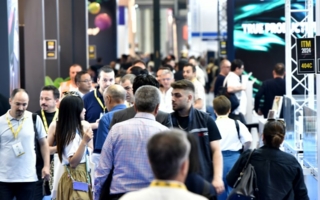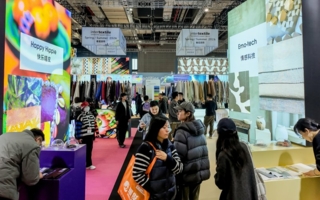14/09/2022 – Interview with Kai Hattendorf — auf Deutsch lesen
Trade fairs are part of the solution
The coronavirus crisis has left its mark on the trade fair landscape. Nevertheless, Kai Hattendorf, CEO of UFI, the Global Association of the Exhibition Industry, in Paris, is convinced that in just two years the industry will be back to where it was before the pandemic. He reiterated this in his interview with AUMA, the Association of the German Trade Fair Industry.
AUMA: It was in spring this year that the exhibition centres in Germany reopened. What is the situation worldwide?
Kai Hattendorf: Germany was the last of the large trade fair markets in Europe to reopen. Spain, Italy, France and the UK – with the appropriate political backing – got there significantly more quickly and are benefiting from that. The trade fair market is now growing all around the world, and is highly dynamic in the USA and in Central and South America. The Middle East, specifically Dubai, has recently attracted a few very large fairs to come there. The same is true of Singapore, for example, one of the pioneers in Asia. International organisers have moved fairs there from places such as Hong Kong. Because of its lockdowns, China is the biggest question mark in our industry. For a time, the country was one of the few markets in which trade fairs were being held.
AUMA: When do you think the international exhibition industry will get back to pre-pandemic levels?
Kai Hattendorf: Our calculations show that on average around the world, in two years we’ll already be back to up where we were before the pandemic. We expect global turnover this year to be somewhat above 70% of the record levels recorded in 2019. North America, with its large internal market, is already approaching 80% while the Asia-Pacific region is still under 70%. Europe is thought to be somewhere in between. We’ll have to see how the fairs that were postponed go.
AUMA: Globally, the trade fair industry has suffered during Covid more than almost any other sector. But can you also identify any positive effects?
Kai Hattendorf: Before the pandemic, the industry often felt under pressure to justify the return on investment – particularly in relation to digital marketing channels that for every activity delivered a multitude of metrics, not all of which made complete sense. But the pandemic has also made clear to us the point and the value of business events such as fairs, for future years and decades: to do business, you need direct personal contact. The big danger now is that we just sit back and try to carry on as things were before the pandemic. That way is doomed, because customers and business have changed since then. The pandemic was a crash course for everyone in digitalisation. We all learned what works, how we can enhance events by digital means, and how – outside of the fairs themselves – we can help our customers all year round to find buyers for their products.
The big players in the sector by 2030 will be the companies that exploit this potential. The trade fair centre of tomorrow will be a hybrid – by which I mean that it will need exhibition halls with superb digital facilities alongside superbly developed and operated online capabilities. What we understand by trade fair infrastructure will thus change significantly.
AUMA: What challenges do you foresee for fair organisers in the next months?
Kai Hattendorf: Across the world, we have two burning challenges: first, we are re-launching at full steam ahead but do not have the staff around the world – this applies to both the organisers and the service providers. We have to deal with that and at the same time attract new talent to our industry. Second, the pandemic is not yet over – look at China. We have to remain flexible. And we need restraint among the politicians so that fairs aren’t banned again when the next coronavirus variant emerges. We’ve shown that we can run fairs safely – in all parts of the world. Governments all around the globe have understood that trade fairs are part of the solution to accelerating the recovery of the economy and society following the pandemic. My wish is that not just the USA, China and Singapore understand this and put it into practice, but that Germany does too.
AUMA: What three developments will change the global trade fair business most dramatically in the next five years?
Kai Hattendorf: The climate crisis, digitalisation and changes in global politics. Together with the UN, we introduced the ‘Net Zero Carbon Events Initiative’ at the COP26 World Climate Conference in Glasgow, with the aim of making the entire events sector climate-neutral by 2050 at the absolute latest. And I believe that we can and must achieve it more quickly than that. Many German exhibition centres have already signed up – that’s good. I've already talked about digitalisation. And geopolitically, we’ll see that in a world that is breaking up into more regional economic areas, trade fairs too need to become less global and more regional. I’ll sharpen that up further and say this: instead of a ‘world’s leading fair’ there will be ‘leading trade fair brands’ under which individual industry fairs will take place worldwide.
Source: https://www.unserebroschuere.de/AUMA-Trends-2022-2023/WebView/




